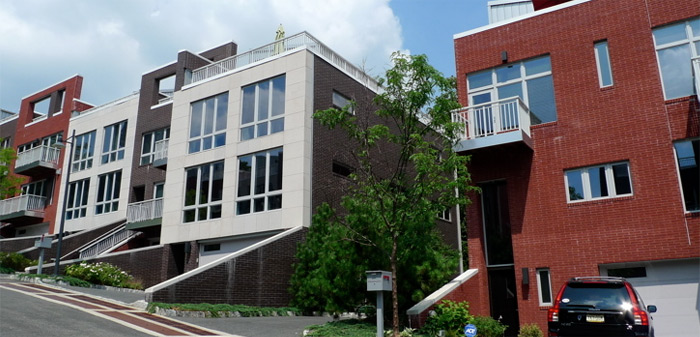Common Interest Community Living
Increasingly, people are choosing to live in a Common Interest Community (CIC). CIC’s are condominiums, townhomes, twin homes and even single family homes. Generally, these communities provide a means of home ownership without many of the maintenance issues (snow removal, grass cutting, etc.) common to traditional homeownership. While these entities provide for a more carefree lifestyle than a traditional home, they also create their own unique set of insurance issues. Let’s explore these issues more closely.
BUILDING COVERAGE
The homeowners association for a CIC will generally provide coverage for the building exterior, the interior of each personally owned unit, the Association’s liability exposure and Directors & Officers coverage. However, the coverage can vary quite a bit for the interior of the units. Most associations carry one of the three following types of policies (exception: twin home or single family home associations may or may not provide structural coverage for the unit):
1. All-in coverage: All-in coverage is the broadest coverage available from your association. This policy type provides coverage for a unitowners interior finishings such as paint and other wall coverings, carpeting and other floor coverings, fixtures, cabinetry and any built-in appliances (subject to any conditions or exclusions as indicated in the associations governing documents).
2. Original Specifications (also known as “original specs”) coverage: Original specifications coverage is one of the hardest types of coverage to determine. With an original specs policy, the association is indicating that they will cover any interior finishings that were originally constructed in the unit. If any of the unitowners (including the original unitowner) choose to change, replace or upgrade any of the finishings in their unit, these items would need to be covered under the unitowners “Additions & Alterations” coverage on their personal HO-6 (condominium/townhome unitowners) policy. Determining how much, if any, coverage is needed for these items can be particularly difficult if there have been multiple owners of a unit.
3. Bare Walls Coverage: With bare walls coverage, the association has chosen to cover up to the bare drywall/sheetrock in the unit and exclude any coverage for interior unit finishings from their master policy. This means that each individual unitowner must cover these items under their personal HO-6 policy. Note: If the association provides bare walls coverage, it is also important to determine if they are providing coverage for the non-load bearing walls and/or the wiring and plumbing within those walls. If not, this will also need to be covered under the HO-6 policy.
In addition to the above, each association master insurance policy will carry a deductible (which can range up to $25,000 per occurrence) for damage that is covered by the policy. This deductible is usually assessed back to each unitowner affected by a claim. If the damage is limited to a single unit, (ie: water damage, fire damage, etc.), that unitowner may be assessed for the ENTIRE association deductible. The good news is that this deductible is covered by most HO-6 insurance companies under either the Additions and Alterations coverage OR the Loss Assessment coverage.
Unitowners/Homeowners Form 6 (HO-6) Coverage
In addition to the coverage provided by the Association for the structure, most individual unitowners also carry a unitowners (HO-6) policy. This policy provides the unit owner with personal property coverage, personal liability coverage, loss assessment coverage and, if requested/required, additions & alterations coverage. If elected, the HO-6 policy can also provide sewer/water backup coverage, identity theft/fraud coverage and coverage for scheduled personal property such as jewelry, furs, fine arts, silver/gold ware, musical instruments, guns, etc.
Coordination of Coverage between the Association Master Policy & the Individual HO-6 Policy
The operation and management of CIC associations is controlled by the Minnesota Common Interest Ownership Act (MCIOA), Chapter 515, 515A or 515B of Minnesota Statutes. These statutes provide that associations must be governed by a board of directors who are usually elected by the association’s members. The board of directors and association members will also generally adopt a set of governing documents (bylaws, declarations) by which the association will be run. These governing documents will specify the association’s dues structure, rules of the association, and the type of coverage being provided to the unitowners (association members) by the association’s master insurance policy. It is very important that each unitowner review these documents, as well as each annual notification from their board of directors, to determine what coverage and/or changes to coverage, might needed on the personal HO-6 policy. It is also very helpful to provide your HO-6 agent with these documents so that he/she can review them to ensure that there are no gaps in coverage between the association’s master policy and the individual unitowners HO-6 policy.
As your Trusted Choice agent, we are available to review your current HO-6 and association’s master insurance coverage, to make sure that you are carrying the coverage you need in the event of a loss. Policy reviews can be performed in person or by phone. Give us a call at 952-593-5025 if you would like to schedule an appointment or speak with one of our personal insurance specialists.
Come back in December for our next installment of the Dyste Williams Personal Lines Blog: Scheduled Property and Holiday Gifts!



LEAVE A COMMENT